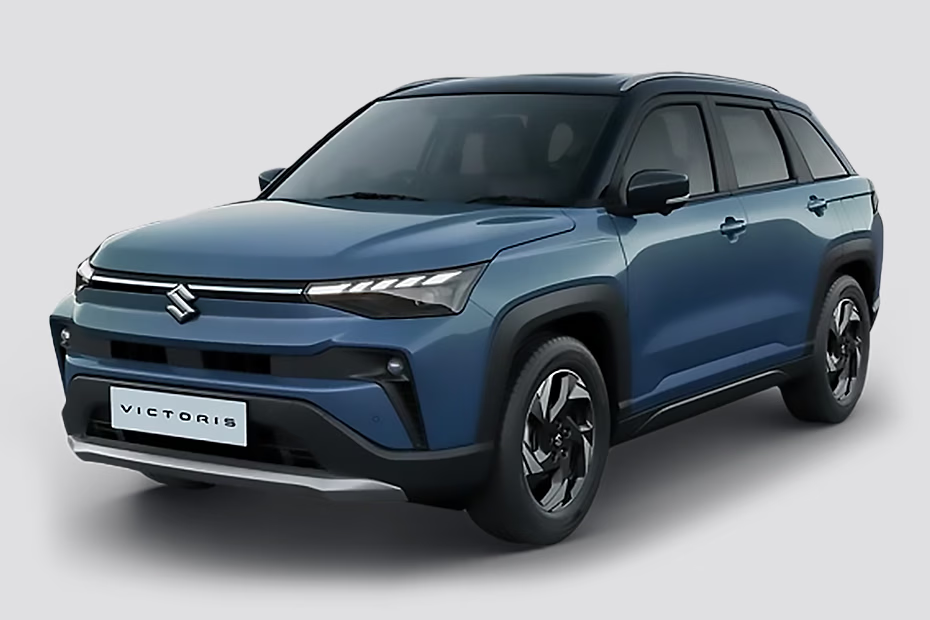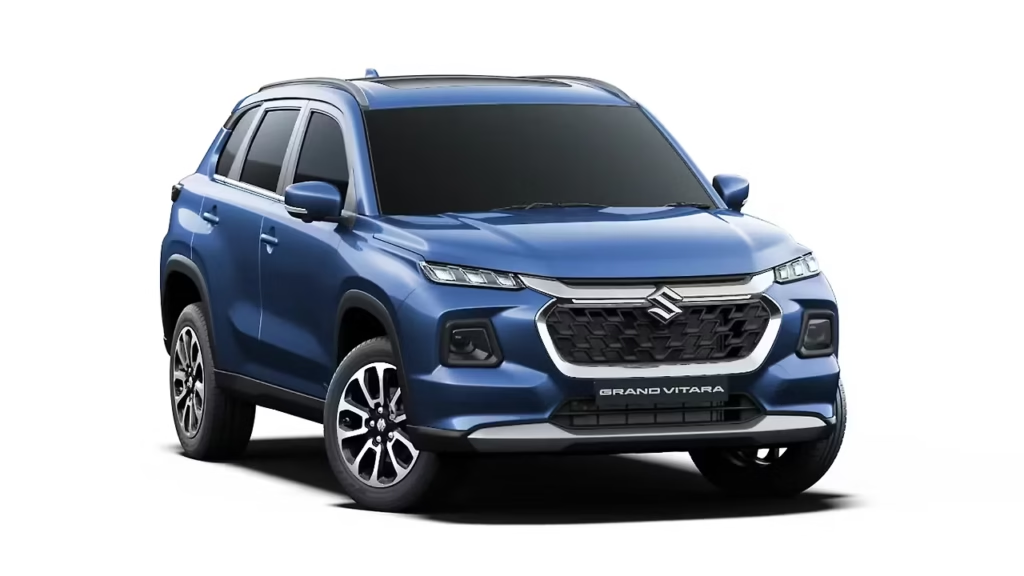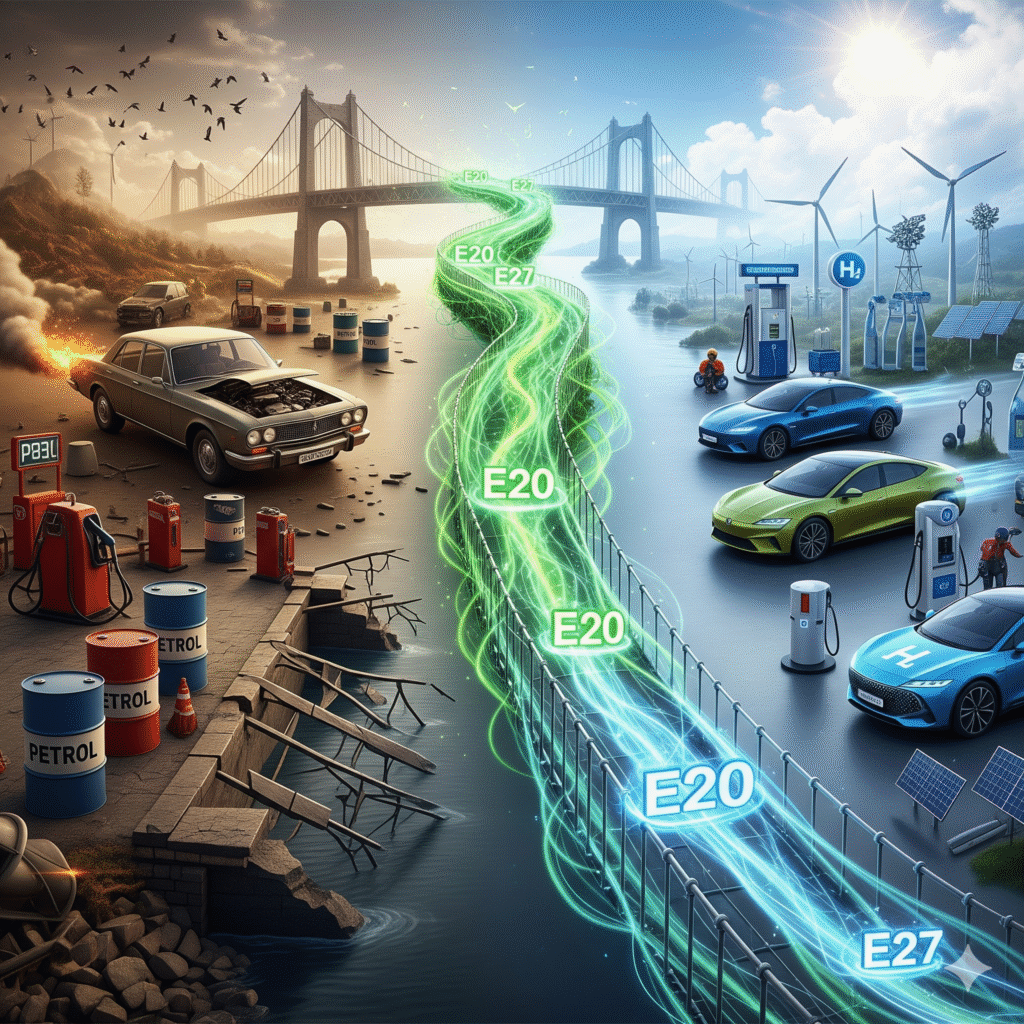Maruti Suzuki’s Victoris, the brand’s premium MPV, has been making waves in India’s competitive automotive market with its sleek design, advanced features, and efficient strong hybrid powertrain. Launched as a rebadged version of the Toyota Innova Hycross, the Victoris combines Maruti’s mass-market appeal with Toyota’s hybrid expertise, offering a compelling package for families and fleet operators alike. The strong hybrid variants, equipped with an e-CVT transmission, have garnered attention for their fuel efficiency and premium positioning. Below is the detailed variant-wise ex-showroom price list for the Maruti Suzuki Victoris Strong Hybrid (e-CVT) as of September 2025, along with insights into features, positioning, and market relevance.
Maruti Suzuki Victoris Strong Hybrid: Variant-Wise Ex-Showroom Prices
The Victoris Strong Hybrid lineup includes five variants, all powered by a 2.0-litre petrol-hybrid engine paired with an e-CVT (electronically controlled continuously variable transmission). Prices are ex-showroom, Delhi, and reflect the latest figures available:
- VXi: ₹16,37,900
- ZXi: ₹17,79,900
- ZXi (O): ₹18,38,900
- ZXi+: ₹19,46,900
- ZXi+ (O): ₹19,98,900
Note: Prices are subject to change based on location, taxes, and dealer-level offers. On-road prices in Delhi could add ₹1.5-2 lakh, factoring in RTO, insurance, and other charges. For precise on-road costs, buyers should consult local Maruti Suzuki Arena dealerships.
Powertrain and Efficiency
All Victoris Strong Hybrid variants share the same powertrain: a 2.0-litre Atkinson-cycle petrol engine combined with an electric motor, producing a combined output of 184hp and 206Nm of torque. The e-CVT ensures smooth power delivery, ideal for urban and highway driving. Maruti claims an ARAI-certified fuel efficiency of up to 23.24 kmpl, making it one of the most frugal MPVs in its class. The hybrid system allows short electric-only drives, reducing emissions and fuel costs, a key draw in India’s rising fuel price environment.
Variant-Wise Features and Analysis
Here’s a breakdown of each variant, highlighting key features and their value proposition:
1. VXi (₹16,37,900)
- Positioning: Entry-level hybrid variant, aimed at fleet buyers and cost-conscious families seeking efficiency.
- Key Features:
- 16-inch steel wheels with covers
- Dual-tone fabric upholstery
- 7-inch touchscreen infotainment with Android Auto and Apple CarPlay
- Dual airbags, ABS with EBD, electronic stability control (ESC)
- Rear parking sensors and camera
- Automatic climate control
- Push-button start
- Analysis: At ₹16.38 lakh, the VXi is competitively priced against rivals like the Toyota Innova Hycross VX (₹19.77 lakh) and Kia Carens Prestige (non-hybrid, ₹14.45 lakh). It’s a no-frills option with essential tech but lacks premium touches like alloy wheels or advanced safety, making it ideal for commercial use or budget buyers.
2. ZXi (₹17,79,900)
- Positioning: Mid-spec variant balancing features and affordability for family buyers.
- Key Features (adds over VXi):
- 16-inch alloy wheels
- 8-inch touchscreen with wireless connectivity
- Leather-wrapped steering wheel
- Rear sunshades
- Cruise control
- Side and curtain airbags (total 6 airbags)
- Analysis: At ₹1.42 lakh more than the VXi, the ZXi adds style and safety, appealing to urban families. The extra airbags and upgraded infotainment enhance its premium feel, though it still misses some luxury elements found in higher trims.
3. ZXi (O) (₹18,38,900)
- Positioning: Enhanced mid-spec with added convenience features.
- Key Features (adds over ZXi):
- Keyless entry with request sensor
- 360-degree camera
- Auto-dimming IRVM (inside rear-view mirror)
- Front parking sensors
- Analysis: For an additional ₹59,000, the ZXi (O) brings practical upgrades like the 360-degree camera, making it easier to maneuver in tight spaces. It’s a sweet spot for buyers wanting safety and convenience without jumping to top-end trims.
4. ZXi+ (₹19,46,900)
- Positioning: Near-top variant with premium features for discerning buyers.
- Key Features (adds over ZXi (O)):
- 17-inch diamond-cut alloy wheels
- 10.1-inch touchscreen with navigation
- Panoramic sunroof
- Ventilated front seats
- Premium sound system (6 speakers)
- Power-adjustable driver seat
- Analysis: At ₹19.47 lakh, the ZXi+ elevates the Victoris into luxury territory, competing with the Toyota Innova Hycross ZX (₹25.97 lakh). The sunroof and ventilated seats cater to India’s premium MPV buyers, though it’s pricier than non-hybrid rivals like the MG Hector Plus (₹18-20 lakh).
5. ZXi+ (O) (₹19,98,900)
- Positioning: Top-spec variant with all bells and whistles for flagship buyers.
- Key Features (adds over ZXi+):
- Level-2 ADAS (adaptive cruise control, lane-keep assist, autonomous emergency braking)
- Wireless charging
- Second-row captain seats with ottoman function
- Ambient lighting
- Analysis: At just under ₹20 lakh ex-showroom, the ZXi+ (O) is the most feature-rich, rivaling premium MPVs like the Toyota Innova Crysta top-end (₹26.55 lakh, non-hybrid). The ADAS suite and captain seats make it a chauffeur-driven favorite, though its price nears compact SUV territory like the Hyundai Creta (₹20 lakh, top-end).
Safety and Bharat NCAP Rating
The Victoris Strong Hybrid has earned a 5-star Bharat NCAP rating, a testament to its robust build. Standard safety features across variants include ABS with EBD, ESC, hill-start assist, and dual airbags, with higher trims adding side and curtain airbags. The top-end ZXi+ (O) introduces Level-2 ADAS, a first for Maruti’s Arena channel, enhancing its appeal in a safety-conscious market where road fatalities remain high (over 150,000 annually, per MoRTH 2024).
Market Context and Competition
Priced between ₹16.38 lakh and ₹19.99 lakh, the Victoris Strong Hybrid undercuts its sibling, the Toyota Innova Hycross (₹19.77-30.98 lakh), while offering similar tech and efficiency. It competes with:
- Kia Carens (₹10.45-19.45 lakh): Non-hybrid, but cheaper with diesel/petrol options.
- Toyota Innova Crysta (₹19.99-26.55 lakh): Diesel-only, premium positioning.
- MG Hector Plus (₹18-22 lakh): Larger, feature-rich, but no hybrid.
The Victoris’s hybrid edge (23.24 kmpl vs. Carens’ 16-20 kmpl) and Maruti’s extensive 3,000+ dealership network give it an advantage in semi-urban markets. However, its premium pricing for a Maruti-branded MPV may face skepticism from buyers used to sub-₹10 lakh models like the Ertiga.
India Launch and Availability
Launched in December 2024, the Victoris is sold through Maruti’s Arena dealerships, unlike the Nexa channel’s premium models like the Grand Vitara. Availability is strong, with waiting periods of 2-4 weeks for most variants, though top-end ZXi+ (O) may stretch to 6 weeks in metro cities due to high demand. Maruti’s Gujarat plant ensures steady production, with exports to ASEAN markets also underway.
Will It Be Priced Right for India?
At ₹16.38-19.99 lakh, the Victoris Strong Hybrid is pricier than Maruti’s traditional MPVs but aligns with the premium MPV segment’s shift toward hybrids. Its fuel efficiency and low running costs (₹2-3/km vs. ₹6-8/km for diesel Innova) appeal to fleet operators and families in Tier-1/2 cities. However, the lack of a non-hybrid option limits its reach in price-sensitive rural markets. Social media buzz on X highlights excitement for the ADAS and captain seats but notes the price overlap with SUVs, suggesting Maruti may need discounts or financing schemes to boost volumes.
Conclusion: A Premium Leap for Maruti
The Maruti Suzuki Victoris Strong Hybrid, with its ₹16.38-19.99 lakh price range, redefines the brand’s MPV legacy by blending efficiency, safety, and premium features. From the value-driven VXi to the loaded ZXi+ (O), it caters to diverse buyers, though its success hinges on overcoming Maruti’s budget image. As India’s EV and hybrid market grows—projected to hit 30% penetration by 2030—the Victoris positions Maruti as a serious contender in the premium MPV space, ready to take on Toyota and Kia head-on. For buyers seeking a versatile, eco-friendly family mover, the Victoris is a compelling choice.



